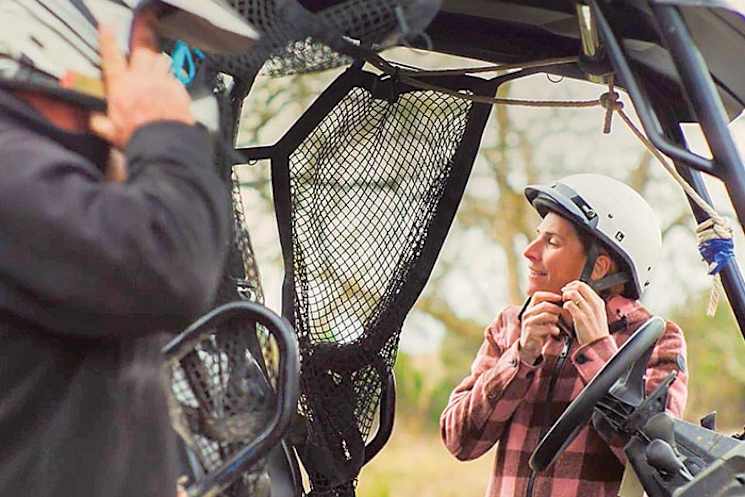
RISKY RIDES... Side by side vehicles have overtaken tractors and quad bikes as the leading cause of on-farm fatalities in a single year, and Farmsafe Australia is urging users to wear helmets, use seatbelts and follow other safety precautions.
PUSHING through fatigue to get jobs done on the farm is one of the most under-recognised yet deadly risks in agriculture, according to Farmsafe Australia.
As part of its Second Chances — Who Knows How Many You’ll Get campaign, Farmsafe is placing a spotlight on fatigue and its overlooked impact on farm safety.
Farmsafe Australia chair Felicity Richards said fatigue had long been normalised across the agricultural industry.
“These are the jobs we push through at the end of the day — the early mornings after late nights, the must-do tasks in the middle of sowing, harvest or shearing,” she said.
“We don’t think twice about the 18-hour day. We shrug off brain fog, forgetfulness, dropping things, or zoning out as just part of the job — but when you’re tired, your decision-making suffers.
“In this environment, mistakes can be fatal.”
The message is simple: the “just keep going” mentality is putting lives at risk.
The 2025 Safer Farms Agricultural Injury and Fatality Report revealed a sobering statistic — 72 fatalities on farms in 2024, the highest in more than 20 years and more than double the 32 deaths recorded in 2023.
Serious injuries have also remained consistently high for more than a decade.
Ms Richards said fatigue was a hidden factor in many of these incidents.
“It doesn’t always make it into the official report, but talk to any farmer and they’ll tell you about the time they nearly rolled a vehicle, misjudged a gate, forgot a safety step or lost their footing after days with little sleep,” she said.
“Fatigue is the invisible risk we’ve trained ourselves to ignore.”
Farmsafe is encouraging a cultural shift: to see fatigue as a safety threat, not a personal weakness.
“Too often, pushing through exhaustion is worn like a badge of honour,” Ms Richards said.
“But real strength is knowing when to pause; backing yourself to rest, call in help, or wait for daylight — that’s a safety decision, not a vulnerability.”
Farmsafe is urging practical changes such as adjusting workloads, improving rosters and planning ahead for peak pressure seasons.
Open conversations within teams and families about fatigue and warning signs are also vital.
“If you manage staff or contractors, your choices matter,” Ms Richards said.
“You set the tone — in how you work, how you rest, and how you talk about risk.”
Near misses, she added, should be shared and learned from, not just dismissed as lucky escapes.
Side-by-side deaths top the list
For the first time in Australian farm safety reporting, side-by-side vehicles have overtaken tractors and quadbikes as the leading cause of on-farm fatalities in a single year.
In 2024, 14 people died in SSV-related incidents, compared with 10 in quadbike accidents and eight involving tractors.
Despite being promoted as safer alternatives to quads — due to seatbelts, roll cages and stability — SSVs are proving dangerous when basic safety protocols are not followed.
“Too often, seatbelts go unused, helmets aren’t worn, vehicles are overloaded or used on steep terrain without training,” Ms Richards said.
“It’s not enough to switch vehicles — we need to change behaviours.”
Some of the key reminders of Farmsafe Australia’s Second Chances — Who Knows How Many You’ll Get campaign include:
- Make time for the plan, not just the job — a short pre-job check can prevent long-term consequences
- Do not let deadlines drown out danger — one honest conversation beats one emergency phone call
- Build in time for safety — schedule backup and build buffer days into pressure periods
- Call the huddle — a quick check-in can reveal risks someone else might not see.



